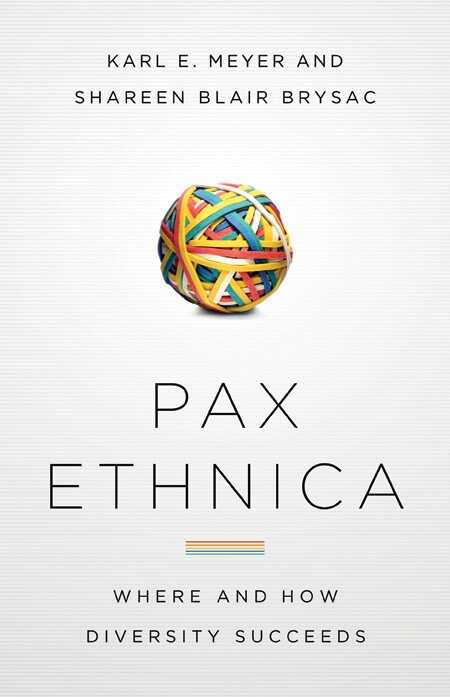Pax Ethnica
Where and How Diversity Succeeds
In Pax Ethnica, Karl Meyer and Shareen Brysac analyze what makes for peaceful coexistence among people with national, racial, religious, and color differences. The book’s value lies in the authors’ demonstration of how peaceful coexistence comes about—and how politicians and citizens, aware of the underlying potential for strife, work to avoid it. The five regional studies are very different and offer varied tools for national and local leaders facing, or dealing with, conflict-torn communities. The first study focuses on the nineteenth-century Schleswig-Holstein conflict, in which a powerful Germany and a weaker Denmark sought possession of predominantly Danish, mixed-population border duchies. After a slow diplomatic waltz, Denmark ceded territory in the interest of peace, securing political and cultural guarantees for sundered Danes.
In the populous and prosperous city of Kerala, in southern India, Hindus, Muslims, Christians, and Jews live and work together peacefully, sharing the belief that peace means progress. A highly developed consciousness exists there, with balanced representation in government. Many well-educated Keralites emigrate to the Gulf states, lessening population and employment pressures while bringing in foreign exchange.
Tatarstan, an autonomous republic in the CIS (Commonwealth of Independent States), straddles the mid-reaches of the Volga, a divide between European and Asiatic regions. Tatarstan’s leaders won significant “sovereignty” by agreeing not to exercise it too aggressively, thus giving Moscow no reason to intervene. In Kazan, the modernized capital, the contemporary Great Mosque and the historic Cathedral stand side by side. Religious and racial tensions seem minimal, with an awareness that this benefit is too great to be lost.
Marseille is also a very pertinent study: this Catholic city, with its large Muslim immigrant population, did not flare up when urban riots with religious overtones swept France. True integration—even in the city center—an inclusive political process, and a silent reciprocal sensitivity are part of the explanation. Finally, Queens, New York City, where over two million people speaking one or more of 188 languages live in harmony, is a stellar success. Adequate housing, extensive employment opportunities, and a robust retail sector, together with responsive schools and, importantly, multiethnic libraries, produce the social glue.
The prospect for replication becomes the question: power politics, self-interest, defined limits, cultural savvy, and abundant opportunity shape the five situations the authors describe—but these characteristics seldom coexist or reach critical mass. National and local officials looking for successful examples ought to read this book.
Reviewed by
Peter Skinner
Disclosure: This article is not an endorsement, but a review. The publisher of this book provided free copies of the book to have their book reviewed by a professional reviewer. No fee was paid by the publisher for this review. Foreword Reviews only recommends books that we love. Foreword Magazine, Inc. is disclosing this in accordance with the Federal Trade Commission’s 16 CFR, Part 255.

